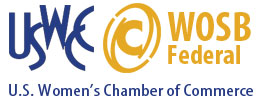
How to Write an Email to HR Asking About a Job Opening
If you’re serious about your job hunt, you’re going to have to think outside the box a bit. While applying for jobs that are posted publicly is perhaps a good place to start, there’s a whole world of career options that will never be posted. So how do you find these jobs? One way is by writing an email to HR to inquire about a job opening.
Obviously, this is something that needs to be handled delicately. If you make a mistake at this phase of the job hunt, you might cause yourself some embarrassment and, even worse, ruin your chances of getting hired by that company in the future.
Thankfully, Staffing Proxy has your back. Here are eight tips for crafting the perfect email to HR about a job opening.
Make sure you have a professional email address.
We’ve written an entire article about having a professional email address, so we won’t go into it in too much detail here. If you want to know more about this topic, you should definitely read that article.
For the sake of this current conversation, however, we’ll just reiterate that your email address should be your first and last name if possible, and you should use a commonly accepted email provider like Gmail. Avoid non-professional sounding email addresses like unicornkitten@thingsthatarefluffy.com or anything like that.
Yes, a non-professional email address can cause you to be eliminated from the pool of eligible candidates, so you should definitely take this seriously.
Address the email to the correct department or person.
If you know who the person is who handles hiring decisions at the company you’re reaching out to, you’re better off sending an email directly to that person rather than to the department. However, it might be company policy to only open job inquiry emails that are sent to a specific email address.
Before you send an email, do some digging to see if you can find this information. Some companies post these details on their website, while most don’t. You might need to reach out to the company directly. If the company is large and there is a general contact line, you could give them a call and ask them if there’s a specific email address or contact person you should reach out to. If it’s a smaller company, you might need to visit in person and ask the receptionist, though we strongly advise the phone if possible here. You should only ever show up in person as a last resort, and you’ll want to be courteous and dress to impress if you do make the visit.
As a caveat, if this is a person you’ve met at a conference or similar networking event and they gave you a business card, that will be the best email address to reach out to. This only applies, of course, if you and this person already talked about a potential job opening. Otherwise, you’ll want to go through the channels we’ve mentioned earlier.
Once you know the proper email address, you’ll want to triple-check the address to make sure you got it right. Perhaps the recipient uses a middle initial in their email address, or maybe the company name has an unusual spelling.
If you send an email to an address that doesn’t exist, you might get an error message response. However, it’s possible that someone else has this email address, and if you email the wrong person by mistake, they might never follow up to let you know you got it wrong. Even worse, they could choose to prank you, pretending to be the correct person for weeks before revealing the ruse.
To avoid any potential mistakes or embarrassments, look over the email address several times so you can be absolutely certain that you got it right.
Use a professional subject line.
Once you start composing your email, you’ll need to come up with a subject line. Keep in mind that this will be the first thing the recipient will see, and it will be the single most important deciding factor in whether or not they will even open the email. If you don’t want to be rejected before your email is ever opened, you need to make that subject line do some hard work.
The best course of action is to list the position and use the word inquiry, followed by your name. Here’s an example:
Design Specialist Position Inquiry – Jane Doe
Some people try to overdo it here and get really creative, but this tends to backfire in almost every instance. If you insist on making a joke here or leading with something that sounds more exciting than the format we listed, we wish you the best of luck. Just know you’re taking a huge risk if you choose to do so.
Lead with a pleasant but professional greeting.
Now we’ve made our way into the body of the email. You should start off with a friendly greeting, but you’ll still want to keep it professional. It’s always best if you know the person’s name who will be reading this.
Opening with “Dear Mrs. Jane” will be better than saying something like “To whom it may concern.” In the former example, it’s clear the person sending the email knows at least enough about the company to get the person’s name right. In the second case, the sender seems like they’re too lazy to even attempt at getting this information.
Just make sure you get the person’s name correct. And if you use Mr., Ms., or Mrs., be sure you’ve got that right too. You don’t want your first interaction with the hiring manager to be one in which you misgendered them; this certainly won’t help you get the job.
If you’re reaching out to a department generally, you’ll want to address the department here instead, but we still think it’s always better to have a person’s name if at all possible.
Treat the content of the email like a cover letter.
The rest of the email should read like a cover letter. This is where you’re trying to sell yourself to the company, so you’ll want to talk briefly about why you think you’d be a good fit for the position you’re applying for.
Don’t be heavy-handed, though, and don’t use hyperbolic adjectives to describe yourself like a 1950s soda pop radio ad. Simply say who you are and why you think you’d be great for this job. Mention any relevant experience here as well.
Note that this shouldn’t be overly long. You’re not creating a comprehensive list of your job experience here; you’re simply making an elevator pitch. The entire thing should be readable within a minute or two. You can test this by reading the letter out loud and timing yourself. If you go beyond two minutes, you’re going to need to trim it down.
Also note that shorter paragraphs work better for digital formats. You don’t want to have your entire email be a single paragraph; break it up into smaller paragraphs whenever you can. This makes it easier to scan, making the recipient more likely to read it all the way through and more likely to retain the essential information.
There’s an art to writing a good cover letter, but the things we’ve suggested here will give you a solid foundation to build upon.
Note that you’ve attached your resume.
If you’ve attached your resume, make sure to note that in the email as well. You definitely don’t want to send an email with an attachment without explaining what the attachment is. Doing so can be seen as a red flag for potential phishing scam.
You can address this simply by adding a sentence that says, “I have attached my resume to this email” or even “See attached resume,” depending on the context.
We’ll talk more about this in a later section of this article, but you should read any instructions the employer has about resumes and email inquiries. Some prefer the resume in the body of the email to avoid having to accept unsolicited emails with attachments.
And if you do attach a resume, make sure it’s in an accepted format, like .pdf or .doc. Strange file types could also get your email tossed into the spam bucket.
Finish with a friendly sign-off and contact information.
Now that you’ve done all of this work, you need to make sure the recipient has a way to contact you if they’re interested in setting up an interview. At the end of the email, include your name, phone number, and email address.
And don’t forget to leave a friendly sign-off. “Thank you for your time and your consideration. Feel free to contact me at…”
You’re trying to be friendly and professional. If you’ve maintained both of those things throughout this entire process so far, you certainly don’t want to blow it in the sign-off. Keep it short, keep it friendly, and most importantly, keep it professional.
Follow directions.
We were hesitant to leave this point until the very end because it’s incredibly important. In fact, this piece of advice overrides all seven tips before it.
If the company you’re applying for lists specific instructions for reaching out via email, follow those instructions explicitly. If those instructions conflict with any of the previous advice in the guide, the company’s instructions trump our advice 100% of the time.
Keep in mind that the people making hiring decisions have listed out these instructions for a specific purpose, and you probably won’t ever know what that purpose is. Perhaps doing things a certain way causes the format to look wonky on their end. Perhaps they have a system that flags any external emails with attachments, meaning attaching a resume will cause your email to be blocked automatically.
On top of all else, failing to follow instructions shows right away that you are not able to follow instructions. And people who are looking to hire are going to be quick to weed out anyone who can’t follow instructions.
We’ll say it one more time: Follow directions.
Conclusion
Sending out an email to HR about a potential job opening can be nerve wracking. Hopefully the information we’ve provided points you in the right direction and takes away some of that stress.
Also note that if you’re looking for healthcare work – and audiology work specifically – contact Staffing Proxy right away. We might be able to put you in touch with your next dream job.

